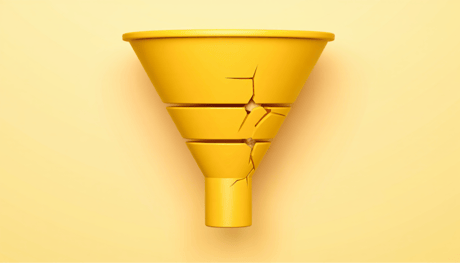-
Written by Christopher Van Mossevelde
Head of Content at Funnel, Chris has 20+ years of experience in marketing and communications.
Tired of watching your conversion rates plummet? Most funnel optimization advice tells you to tackle the symptoms of a leaky funnel, like checkout friction or ad copy. But the root cause is data fragmentation. If your team doesn’t have a unified, trustworthy view of how customers move across channels as your foundation, every fix is just plugging holes.
This guide shows how to move beyond surface-level CRO tactics and fix the real problem. Because once you have unified, reliable data, you won’t just drive more conversions. The big win here is gaining a clearer, more accurate aggregate view of the customer journey: enough to spot where funnels leak, prove impact and align marketing spend with business growth.
When data lives in silos, your optimization efforts are reactive. You’re fixing leaks you can’t see rather than rebuilding the system that caused them.
Funnel fail #1: optimizing in silos without the full picture
Buyers don’t follow a straight line. Someone might discover your brand on Instagram, skim a blog post a week later, click a retargeting ad, abandon their cart and only convert after an email promo.
The customer journey is messy. According to Google’s consumer insights, 60% of consumers take six or more actions before deciding to buy a product from a new brand. Without connected data, your team only sees fragments of this messy reality, making reliable funnel analysis impossible.
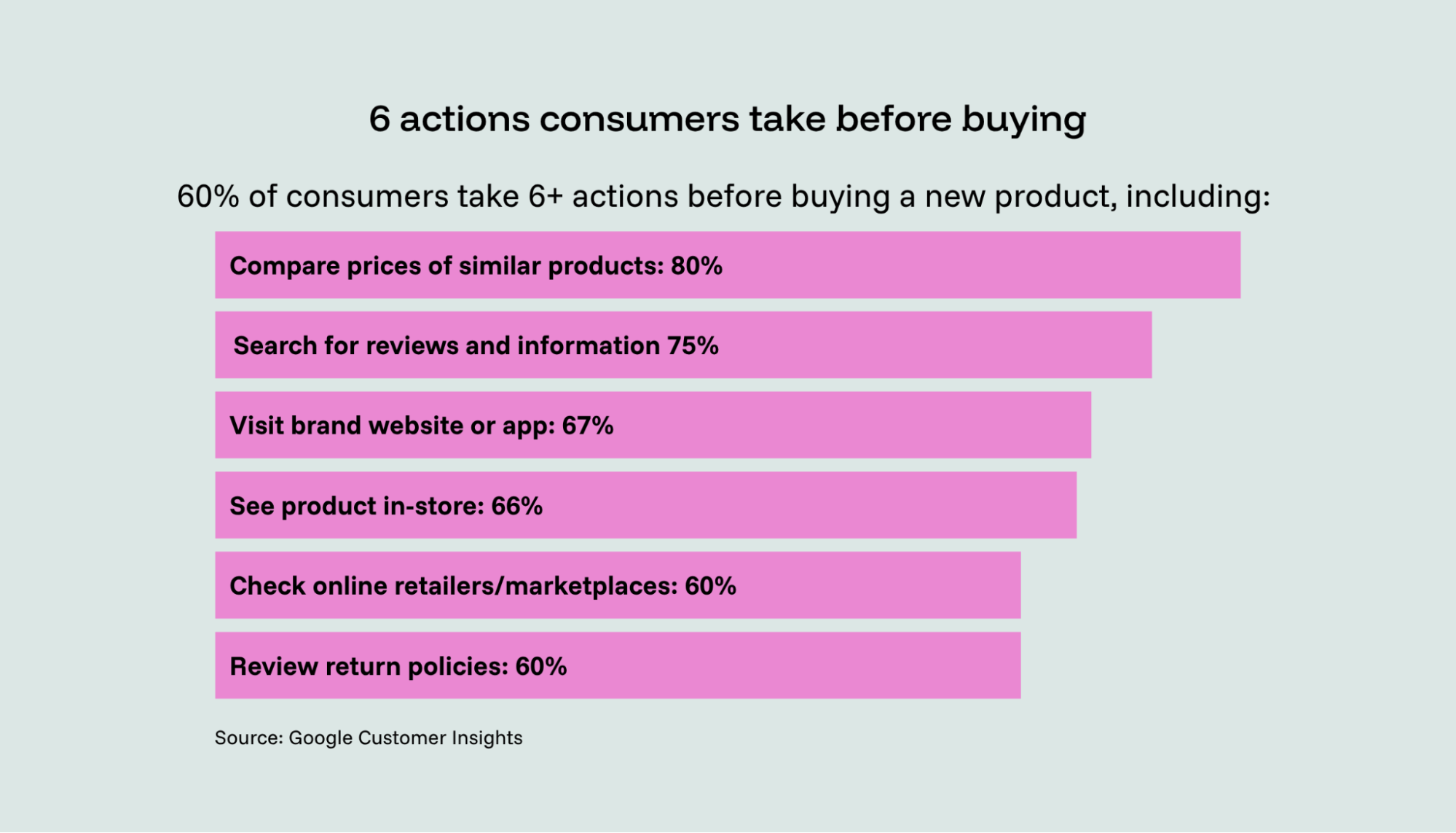
That gap leads to misattributed performance, wasted spend and missed opportunities to build relationships. Worse, teams create strategies based on partial snapshots — web analytics here, CRM records there — never seeing how touchpoints actually work together.
Funnel fix: strengthen attribution with CAPI
Even if tracking restrictions, cookie loss and cross-device journeys mean you’ll never get a perfect, user-level view of every customer, you can still strengthen the signals you send back to ad platforms with Conversion APIs.
Funnel integrates natively with Conversion APIs (CAPIs), making sending server-side conversion data directly to your ad platforms automatic and reliable.
Think of Funnel as your campaign tracking command center, where you decide what data moves and when. You can sync the right data at the right time to all your ad platforms, improving attribution accuracy, reducing signal loss and helping ad algorithms optimize campaigns with more reliable inputs.
Funnel currently supports seven Conversion APIs:
- Meta (Facebook) CAPI
- TikTok Events API
- Pinterest Conversion API
- Snapchat Conversion API
- Google Enhanced Conversions
- Microsoft Ads Conversion API
- Pinterest Ads
Instead of relying only on incomplete browser data, you’re feeding platforms a cleaner, privacy-safe view of performance, which means smarter bidding, better targeting and ultimately stronger ROI.
And when paired with Funnel’s unified data foundation, those Conversion API signals become part of a closed-loop system, improving platform optimization while Funnel independently measures the true business impact. Together, they give you reliable performance data on both sides of the loop: better inputs for ad algorithms and better evidence for your own decision-making.
Funnel fix: power customer journey mapping with unified data
With unified data, you can connect the dots across platforms and sessions to see how potential customers actually move through the funnel and where they fall off. Funnel consolidates those scattered signals into one trusted view, giving you the clearest possible picture to guide decisions, even if it’s not the definitive truth at the user level.
You can see how customers move through your funnel at an aggregate level, not user by user, which means you’ll get strong signals about where friction exists. That level of clarity is enough to guide smarter decisions, because it shows you where to investigate further with CRO or campaign adjustments.
Let’s walk through how unified data can help a premium dog snack brand through each stage of the marketing funnel:
Awareness stage
Most brands stop at surface-level metrics like views or likes. But high engagement doesn’t always mean high impact.
Let’s say the premium dog snack brand launches a viral Instagram Reel, “What’s really in your dog’s treats?” exposing harmful ingredients in common snacks versus their clean alternative.
At first glance, the team celebrates the spike in engagement and assumes the Reel directly drove conversions. But in reality, a large share of paying customers engaged with the Reel at some point, but most conversions happened after those same customers visited a related blog post titled “5 red flags in commercial dog snacks.”
Key takeaway: Don’t just chase impressions. Measure with top-of-funnel efforts that lead to downstream conversions.
Consideration stage
At this stage of the funnel, prospective customers are curious, but not fully convinced. Mid-funnel content, like blogs that offer valuable insight, product comparisons and user feedback, should help move them closer to choosing you. But what content helps close the gap?
The premium dog snack brand creates blog posts and gathers customer reviews:
- “What to look for in high-quality dog treats”
- “Ingredient spotlight: why we chose salmon oil and turmeric”
- Honest reviews from dog parents with picky eaters
Through analyzing CTR, they learn:
- Which blog pages have the highest assisted conversion rate: the “5 red flags” post doesn’t get the most website traffic, but drives the most purchases.
- Which channels drive the most engaged visitors to those blogs: search brings in qualified users who read both blogs, while Instagram drives quick clicks but low time on page.
- How different new and repeat customers interact with mid-funnel content: returning customers engage more with ingredient spotlights, while new visitors lean on comparison posts and customer testimonials.
Connecting data across sessions and channels shows you exactly what’s working and what’s not. The team then refines budget spend and personalizes mid-funnel content by target audience segment.
Key takeaway: Use data across channels to prove which mid-funnel content actually accelerates buying decisions.
Decision stage
Now the premium dog snack brand launches a “15% off” campaign across Instagram ads, Google search and email.
You can compare cohorts by acquisition channel. For example, customers first acquired through Instagram might generate a lower average lifetime value compared to those acquired through email campaigns. You’re not tracking every individual across all their purchases, but you’re analyzing aggregated patterns that reveal which channels deliver higher-value customers.
Knowing which marketing channels attract high-value customers lets you budget smarter. Don’t just optimize for conversion volume, optimize for channel value across the full customer journey.
Key takeaway: Track not just abandoned carts, but which acquisition channels bring in customers with the highest lifetime value.
Retention stage
Most funnel strategies stop at the point of conversion, but repeat buyers are where the real ROI is. Why? Because it’s easier and cheaper to keep satisfied customers than to acquire new ones. In fact, the BIA Advisory reports that returning customers spend 67% more than new customers.
Here’s how the premium dog snack brand ensures customer satisfaction and builds brand loyalty:
- After purchase, the brand sends a personalized email recommending a new flavor.
- That email links to a blog post, “How to rotate treats for picky dogs,” which the customer reads and then buys again.
- A month later, they earn loyalty points for a referral and share the brand with a friend.
Loyalty is strategic. By connecting post-purchase behavior across email, content, referral and purchase data, the brand can track what actually drives long-term value and invest accordingly.
Key takeaway: Tie post-purchase engagement back to spend efficiency. In other words, measure how much additional revenue and loyalty you generate from customers you’ve already paid to acquire. It’s not about chasing the next sale at any cost; it’s about maximizing ROI from the spend you’ve already made.
Funnel fail #2: running tests that mislead more than they inform
Bad data leads to bad tests. You can’t validate results if the data is fragmented, mislabeled or not segmented properly.
Here’s what often goes wrong:
- Inflated metrics from bot/spam traffic
- Duplicated users across systems (CRM, web, ads)
- Inaccurate attribution (social media post vs. email click vs. direct)
But even if your data is clean, your testing framework might not be. Too often, marketers run A/B tests without a clear hypothesis, test too many variables at once and ignore buyer personas and segmentation.
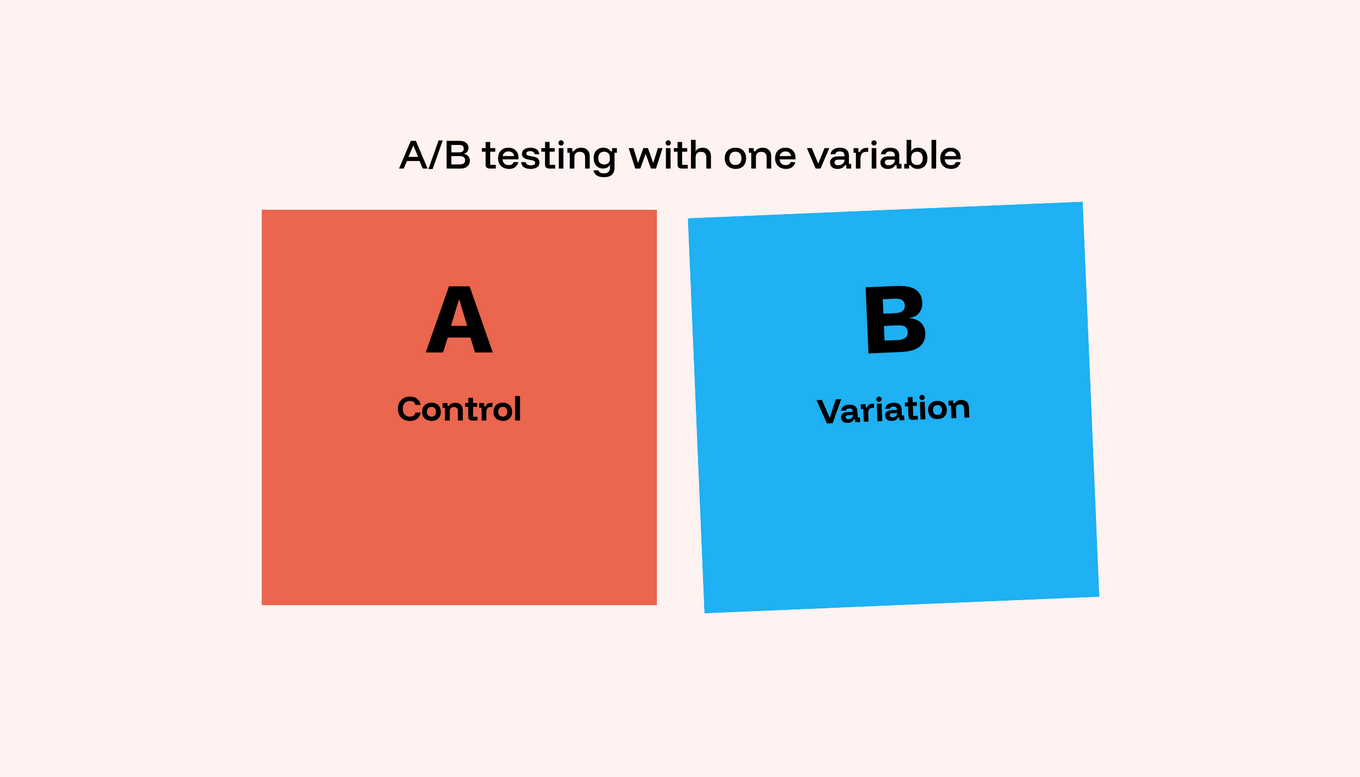
Testing is supposed to give you clarity, but if both your data and design are shaky, it’s just a waste of your marketing efforts and budget.
Funnel fix: validate results with clean, connected data
Imagine you see a bump in your click-through rate after tweaking your landing page. Great, until you realize the increase came entirely from mobile, while desktop performance dropped.
Without clean, connected data and proper segmentation, your conclusion would be flawed. To optimize effectively, you need to be able to test and compare your results to normalized data. Only then can you trust the insights and make actionable decisions.
Use conversion rate optimization (CRO) tools like Optimizely, VWO and Google Optimize to run your tests and gather results. From there, Funnel integrates that data with everything else, so you can validate whether the “winning” variant truly moved the needle at a business level. Did it increase conversion quality, revenue impact or retention? With clean, connected data and a single source of truth, you get the answers you need to power your marketing funnel strategy.
Funnel fail #3: chasing vanity metrics
It’s easy to get distracted by pageviews, video views, social shares or email open rates, especially when those numbers look good on a slide deck. But the wrong KPIs lead to the wrong decisions.
Marketers often fall into the trap of optimizing for website visitors or impressions when the goal is conversion, retention or customer lifetime value. This misalignment weakens your conversion funnel’s effectiveness.
So what ends up happening is marketing performance looks strong at the surface level, but the bottom line doesn’t move. Conversion rate optimization comes from aligning KPIs with business goals at every stage of the funnel.
Funnel fix: measure effectiveness, not just conversions
To be fair, the problem isn’t tracking vanity metrics. It’s mistaking them for meaningful indicators of success. Don't use vanity metrics to implement funnel optimization.
Pageviews, open rates and impressions can tell you what happened, but not why it matters or whether it drives business impact. Instead, measure for effectiveness. Match each stage of the sales funnel with KPIs that reflect your business goals:
|
Funnel stage |
Vanity metric |
Effective metric |
|
Awareness |
Impressions, reach |
% of users who return, click to site, or convert later |
|
Consideration |
Time on page, scroll depth |
% of users who sign up, view pricing, or request info |
|
Decision |
CTR on CTA buttons |
Revenue per visitor, LTV of converted customers |
|
Retention |
Email open rates |
Repeat purchase rate, customer referral rate |
With Funnel’s dashboards, it’s easy to visualize performance across channels and segments. Everyone works from the same source of truth. Teams can align on key KPIs, identify user funnel drop-offs and make decisions that move the needle.
When every team measures against the same business-level metrics, marketing effectiveness improves. You stop optimizing for engagement and start optimizing for growth.
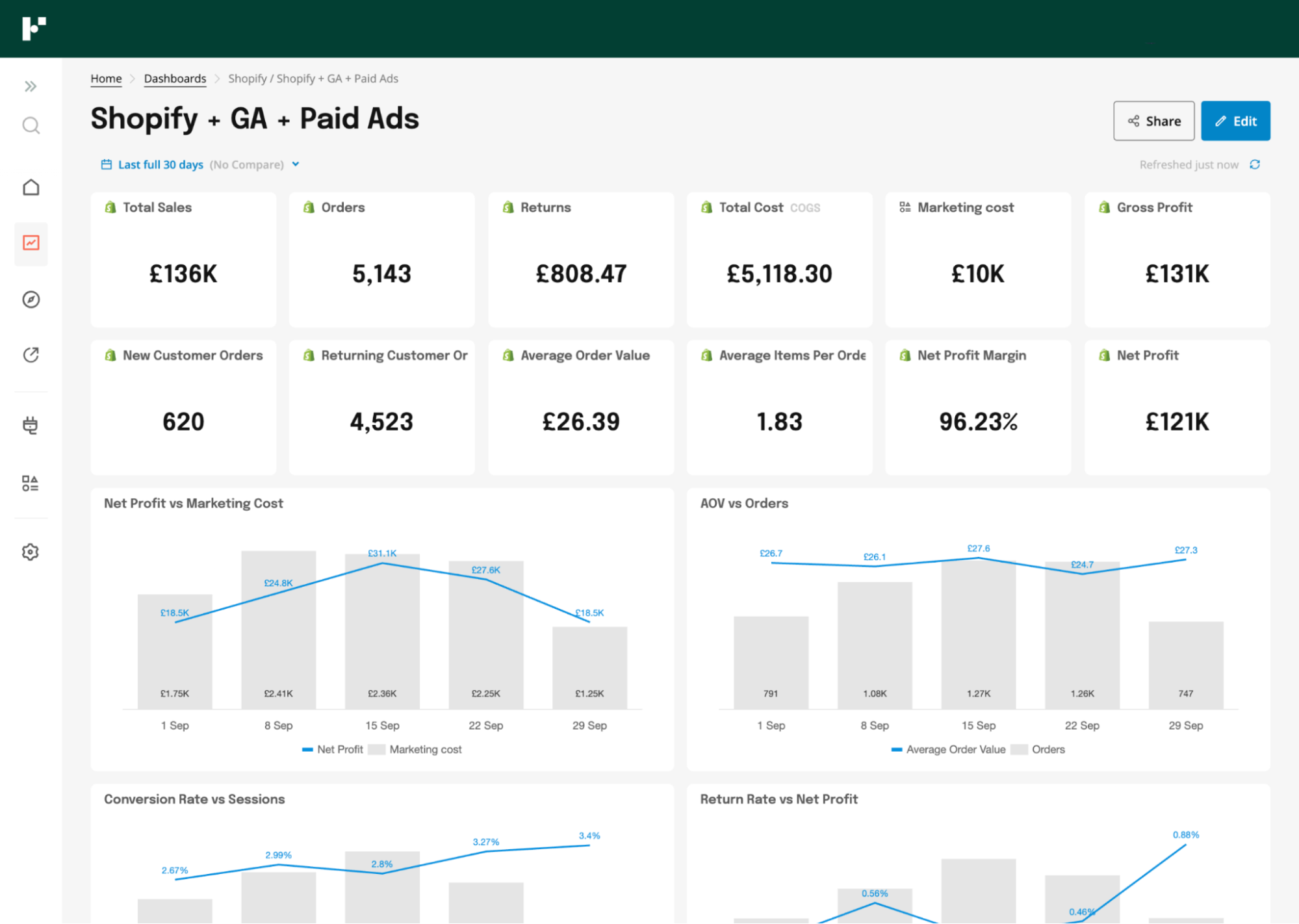
Funnel fail #4: relying on single-channel insights
There are so many ways to discover and interact with your brand now. Ads, search, organic social, email, referrals, influencer content and even offline touch points. Relying on single-channel insights to understand performance or optimize your conversion funnel just doesn’t make sense.
Even if a campaign performs well in-platform, you can’t assume it’s the main driver of conversions. When your view is fragmented, you risk:
- Missing key attribution signals from supporting channels
- Confusing your conversion funnel optimization decisions
- Undervaluing or overvaluing the role of certain touch points
- Creating blind spots that lead to wasted budget
And even when you do try to stitch it all together, conflicting data across channels tells a different story. One channel says conversions are up. Another shows a drop in engagement. Your gut says one thing, but leadership wants proof. So how do you actually know what’s working?
Funnel fix: Use advanced measurement tools for smarter optimization
Advanced measurement, such as marketing mix modeling (MMM), helps marketers understand which channels and tactics drive long-term results. It analyzes historical performance data like ad spend, impressions and sales over time. Then, it cross-validates those trends to see what actually drives growth.
With Funnel, you can combine MMM with other measurement tools to get more precise and meaningful results through triangulation:
- Marketing mix modeling (MMM) to understand long-term, macro-level impact
- Data-driven multi-touch attribution (MTA) to analyze user-level digital journeys
- Incrementality testing to verify true cause and effect
Attribution uncovers patterns of contribution; incrementality confirms causation.
This layered approach means you’re not relying on one method or dataset. Instead, you gain a comprehensive view of performance that’s backed by data you can trust. As a result, you can optimize your conversion funnel faster, reduce wasted spend and validate marketing efforts with trustworthy insights.
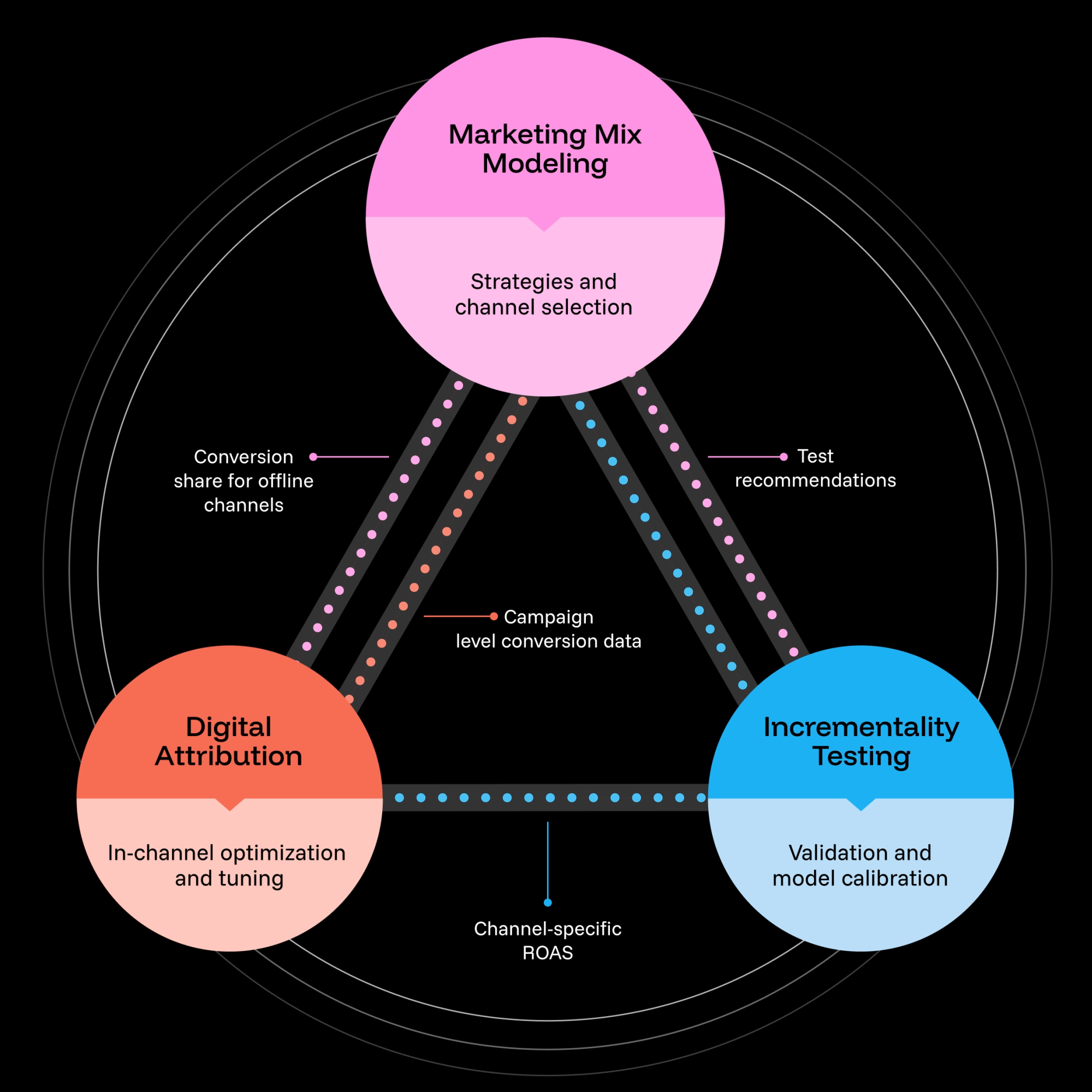
Funnel fail #5: treating optimization as a one-time fix
Many sales and marketing teams treat optimization like a checkbox: launch → measure once → move on. What they don’t take into account is that user behaviors change, market conditions shift and channel algorithms update.
There will always be new bottlenecks to identify and new signals to test. So, you can’t treat funnel optimization like a one-time thing, or you risk making decisions based on outdated information.
Funnel fix: drive continuous improvement with a consistent data flow
The best marketers don’t wait for problems to appear. They stay curious, test aggressively and make iteration a habit.
And that’s only possible with a consistent flow of data. You’re able to spot issues early, validate what’s working and continuously optimize based on what numbers tell you.
Look at your funnel through two lenses. On the quantitative side, track metrics like drop-off rates, conversion flow and engagement levels to see where people hesitate. On the qualitative side, use tools such as user surveys or session recordings to understand why they hesitate. Together, these views give you a more complete picture of where friction exists and how to address it.
Funnel powers this cycle of continuous improvement by delivering clean, reliable data that’s always up to date. Automatic data updates ensure you’re always optimizing with fresh data. Even when APIs change or platforms roll out updates, Funnel’s prebuilt connectors adapt to prevent broken pipelines.
You can also send marketing data into your preferred BI tools, whether that’s Looker, Tableau, Power BI, or a custom data warehouse setup. That means your team can analyze performance in the tools they already use, without waiting on engineering or data teams for support. With this foundation, iteration becomes not just easier but scalable. You can test, learn and optimize with confidence.
Your funnel doesn’t need patchwork. It needs clarity.
Marketing funnels don’t fail because marketers don’t test enough CTAs. They fail because teams are flying blind with fragmented data. And, in a post-cookie world, customer journey mapping isn’t getting any easier. But with the right tools and a marketing funnel strategy powered by data you can trust, you can spot friction points and identify optimization opportunities faster.
Funnel acts as a single source of truth for all your marketing data. It also integrates natively with Conversion APIs, helping you stay on the right side of privacy laws with an aggregate view of the customer journey. Data from hundreds of sources is automatically refreshed and normalized, so you always have data to compare with your optimization test results, and you can combine advanced measurement tools to widen the view even further.
The bottom line: Funnel gives you the clearest picture possible so you can continually optimize your marketing funnel for business impact.
-
Written by Christopher Van Mossevelde
Head of Content at Funnel, Chris has 20+ years of experience in marketing and communications.
